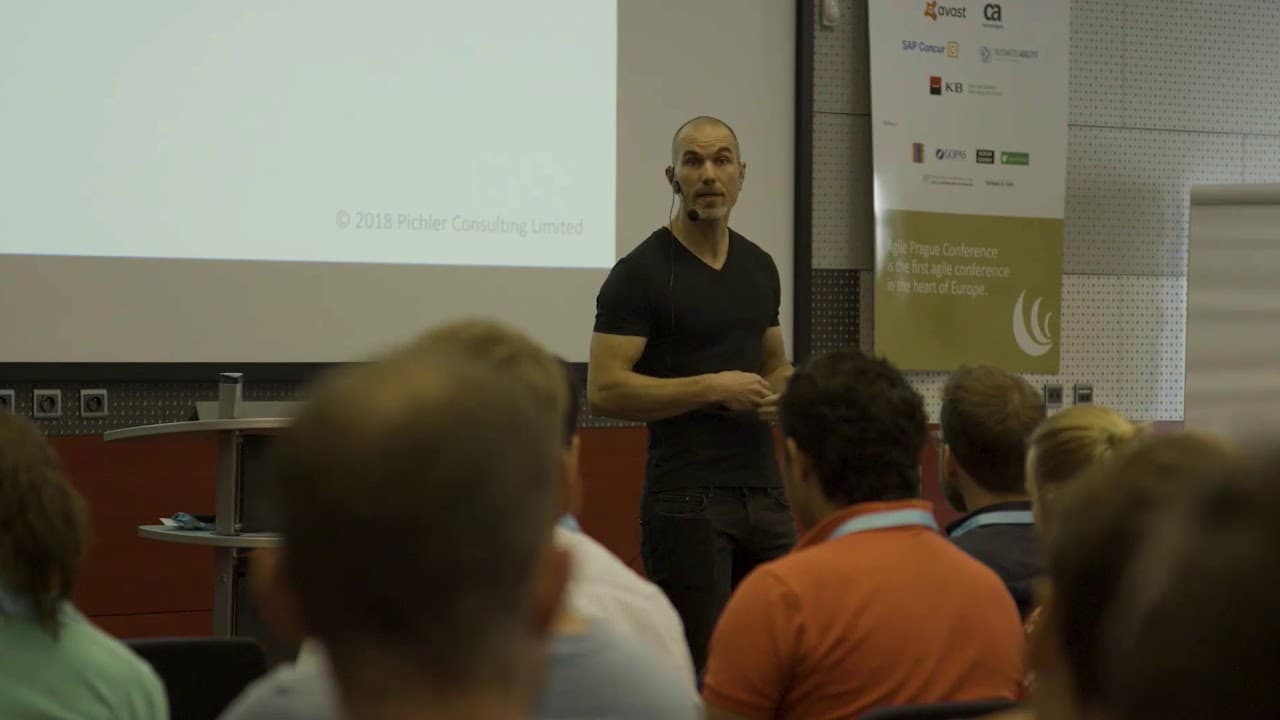Yeah, thank you for the kind introduction, Fred. It’s really nice to be here.
As you can see, I’d like to talk about building a product users want and how an effective product strategy can help us with this. I'm very happy to take questions during the talk. In fact, that helps me understand if you're still awake, if what I’m saying is helpful and meaningful. So whenever you feel there’s something you don’t quite understand or something you disagree with, feel free to raise your hand. I think we've got two mics in the room, and we’ll try to get them to you as quickly as possible. Again, I don’t mind being interrupted—in fact, I quite appreciate your questions.
Developing a software product, a digital product, requires a lot of attention to detail. We just heard about the design work necessary in terms of user design, user interaction design, and user interface design. We need to identify the right features, think about user stories, make the right technology decisions, consider architecture, tools, and processes. There are a lot of factors at play, and paying attention to these details is essential to offering a successful product.
However, I find that some agile teams become so focused on the details that they lose sight of the big picture. They forget why they’re building the product in the first place and who the product is really for. If those questions aren’t being kept in mind or aren’t answered, we risk building a product with cool features and amazing technologies that nobody really wants or needs.
What I’m trying to share in this talk are techniques to help you mitigate that risk and maximize the chances of building a product that is meaningful to users. A key element in doing so is creating a meaningful vision and an effective strategy for your product.
What Is Vision and Strategy?
Let me show you a specific format or template that I like to use to capture a vision and strategy for a product. This structure is called the Product Vision Board. Some of you may be familiar with it. I’m not trying to persuade you to use a specific template or sell anything. If this structure resonates with you, great! If not, that’s fine too. It’s not about using a specific template—it’s about asking the right questions.
The first question to ask is: What is the vision? By vision, I mean the ultimate purpose of the product. What is the positive change it should bring about? Why do you bother working on this product beyond making money?
For example, if I wanted to create a product that helps people become more aware of what they eat—maybe when they eat, how much they eat, or even what they drink—the vision could be: “Help people eat healthily.” Or, in a more concise form, “Healthy Eating.”
I like to work with short, focused, concise vision statements that are easy to remember. Ideally, the vision should be shared—everyone involved in developing and providing the product should buy into it and find it meaningful, maybe even inspiring. If the vision doesn’t resonate with you, you might not put in your best effort.
Life is short. If you can avoid it, don’t work on products that you don’t find meaningful.
Beyond Vision: Developing a Strategy
Having a vision is a great starting point, but it’s not enough. Before thinking about features and design specifics, we need to formulate a strategy. Strategy, in my view, has four key elements:
1. The Beneficiaries (Target Users and Customers)
The first question to ask is: Who are the users and customers of the product? Who should use the product? Who will be using the product? Who should pay for it? These groups may be the same or distinct. For example, this clicker I’m using was purchased by my company, but I’m the user. So, in this case, the customer and user are different.
For brand-new products, I recommend starting with a small, focused, homogeneous target group. Trying to solve a big problem for a large group of people often results in a product that is overly complex, time-consuming, and risky to develop.
For example, I could target:
- People living with a medical condition like diabetes.
- Elderly people who need reminders to eat and drink enough.
- Children or teenagers struggling with eating disorders.
These are three very different target groups. It’s important to explore and define your target group clearly.
2. The Problem or Need
What specific problem does the product solve? For example, if you used Google Maps this morning, you were using a problem-solving product—it helps you get from point A to point B. If you used Facebook, Twitter, or Snapchat, you were using a benefit-generating product—it helps you stay in touch with family and friends.
Clearly define what value your product provides and why users would want to use it. Be specific. A vague problem statement makes it difficult to measure success.
3. The Product and Differentiation
What kind of product is it? Is it a digital product? A web-based product? A mobile app? What makes it unique?
Most markets have alternative products, so it’s important to define what sets your product apart. For example, when the Google Chrome browser was developed, the team focused on three key differentiators: speed, simplicity, and security. This focus helped Chrome compete in an already crowded market.
4. Business Goals
Why is this product valuable for your business? A product exists to create value—for both users and the business. There has to be a balance between the two.
Business goals could include:
- Generating revenue (e.g., Microsoft PowerPoint, part of Microsoft Office, a major cash cow for Microsoft).
- Indirectly driving sales (e.g., iTunes helped sell iPods and iPhones).
- Building brand value (e.g., the Toyota Prius helped Toyota position itself as a green brand).
- Reducing costs (e.g., IT applications that automate workflows).
Clearly define your business goals so you can measure success and align your strategy accordingly.
Conclusion
Developing a successful product requires more than just focusing on features or technology. It requires a clear vision and a well-defined strategy. Strategy should not be static—it must be reviewed regularly to adapt to changing markets, customer needs, and business goals.
If you’d like to learn more, you can visit my website or check out my book, Strategize. I’d love to stay in touch, so feel free to reach out via email or social media.
Thank you very much! I hope this was beneficial.



